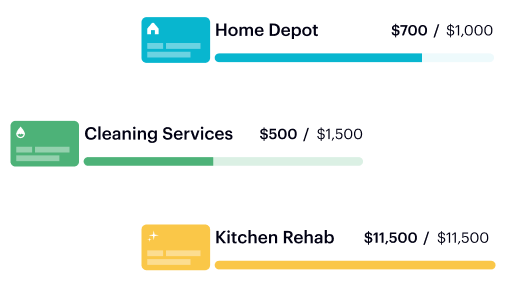If you’re thinking about selling an investment property and buying another, a 1031 exchange is the best way to grow your portfolio while deferring capital gains. In this article, we’ll review what a 1031 exchange is, the pros and cons, and everything else you should know to get started.
1. What is a 1031 Exchange?
A 1031 exchange allows you to avoid paying capital gains taxes when you sell an investment property and reinvest the proceeds from the sale within certain time limits in a real estate property or properties of “like-kind” and equal or greater value. The IRS defines like-kind properties as having the same nature or character, even if they differ in grade or quality. For instance, you can exchange vacant land for a commercial building.
Here are a few examples of 1031 exchange-qualifying properties:
- Residential, commercial, industrial, or retail rental properties
- Farmland or raw land
- Oil and gas royalties or a ranch
Like-kind properties must also be equal or greater in value. Any cash left over from the sale of the primary property, known as the boot, will be taxed as a capital gain.
Remember that a primary residence usually doesn’t qualify for an exchange because it is not used in trade, business, or investment. However, if you have an investment property or a second home used to generate income, or your primary residence becomes an investment real property, you may qualify for a 1031 exchange.
Baselane Bookkeeping
If you’re ready to make the most of your real estate investments, you’ll need a way to track your finances and cash flow. Easily manage all your property expenses in one place using Baselane Bookkeeping.
Learn More2. Examples of a 1031 Exchange
Suppose you purchased an apartment building in New York ten years ago for $1,500,000. You estimate the property will sell for $2,850,000. Assuming $400,000 in depreciation costs and $50,000 in closing costs, your realized gain will be $1,700,000. The capital gain tax is 37.3%. By utilizing a 1301 exchange, you can defer paying $634,100 in taxes to reinvest in a potential replacement property.
3. Why Would You Want a 1031 Exchange?
The main benefit of carrying out a 1031 exchange is the ability to defer the capital gains tax, thereby reducing your immediate tax liability. You can change the form of your investment without cashing out or paying capital gains taxes. Since there is no limit on how often you can do a 1031 exchange, you can roll over the gain from one of your real estate property investments to another over and over again. Even if you profit from the swap, you avoid paying property taxes until selling the real property for cash down the line. This means you would only pay one tax at a long-term capital gains rate down the road.
4. What are the Advantages and Disadvantages?
A 1301 exchange can be a savvy investment strategy to build wealth. However, the exchange process and regulations can be challenging to navigate. Before making a 1301 exchange real estate investment, it’s worth considering all the pros and cons:
Pros:
- Deferral of capital gains taxes when selling an investment real property
- Increased cash flow and leverage
- Great wealth-building tool
Cons:
- Strict procedures, timelines, rules, and regulations
- Losses aren’t recognized
- Taxed on left-over cash after a sale
- IRS rules stop you from using your swapped property as your new home/second home right away
5. What are the Steps in a 1031 Exchange?
A 1031 exchange transaction must be an exchange rather than selling one real property to purchase another. In other words, you (the seller) can’t receive the cash from a sale to buy the replacement property. Instead, a qualified intermediary will hold the funds to buy the replacement property for you to complete the swap. Anyone can be a qualified intermediary except for a family member, employee, financial connection, or agent of the taxpayer.
This general outline shows the steps to complete a successful 1031 exchange:
- Decide on the original property you want to sell (it must be held for productive use in a trade or business or for investment purposes to qualify).
- Select a qualified intermediary to facilitate the sale of investment property, hold the proceeds, and complete the purchase transaction.
- Add a relinquished property addendum to the sales contract offer that specifies you intend to complete a 1031 exchange.
- Supply your intermediary with a copy of the property sales contract as soon as you can
- Identify your replacement property within 45 days of the sale of your old property.
- Provide a copy of the sales contract to your intermediary.
- Sign an assignment contract.
- Close on the replacement property within 180 days of the sale of your old property.
- File IRS Form 8824 for the year in which the original property was sold.
6. Depreciation and 1031 Exchanges
Depreciation allows real estate investors to pay lower taxes by deducting the costs of property wear and tear on their tax returns. When that property is sold, the IRS will try to recapture some of those deductions to work them into the total taxable income. A 1031 exchange helps delay this by rolling over the cost basis from your old property to your new replacement. So, your depreciation calculations continue as if you still owned the old property.
For example, let’s say the adjusted cost basis for a single-family home you bought five years ago is $85,000. As a real estate investor, you sell the property for $150,000 and complete a 1031 exchange for a replacement property worth $200,000. The $85,000 adjusted cost basis from the relinquished property will carry over to be combined with the additional $50,000 ($200,000 – $150,000 = $50,000) spent to buy the replacement property. The new adjusted cost basis is $135,000 ($85,000 + $50,000).
7. Timelines and Rules
A simultaneous exchange involves two parties, often property owners, swapping one property for another. Since the chances of you finding another property at the exact time of selling are slim, the 1031 exchange rules have been updated to accommodate purchase deadlines.
Delayed Exchange – Closing on the sale of a property before buying another is considered a delayed exchange. An intermediary will hold the cash after the sale and buy the replacement property for you.
Three-property Rule – The IRS says you can identify three rental properties as a potential swap regardless of their fair market value so long as you close one of them.
45-day Rule – You must close or identify the replacement property in writing to an intermediary within 45 days of selling the original property. This time period includes weekends and holidays.
180-day Rule – You are required to close on a new property within 180 days of the sale of the old property. This timeline includes the 45 days to select a new property.
Reverse Exchange – You can buy the new investment property before selling the old one using an exchange accommodation titleholder. The same 45-day and 180-day rules still apply.
Vacation homes – The vacation home must be used as a rental property and have tenants before and after the sale in order to qualify for an exchange.
Conclusion
The 1031 exchange is a powerful tool for real estate property investors to defer capital gains tax and reinvest in new opportunities.
Investing in properties can be complicated, but a 1031 exchange provides an excellent avenue to continue building your portfolio while deferring capital gains taxes. Through this article, we’ve broken down the essential elements you need to know, from understanding what a 1031 exchange is to the complexities surrounding timelines and rules.
A 1031 exchange can be your best option, depending on how well you adhere to its stringent guidelines. Every step needs careful planning and precision, from identifying like-kind properties to meeting tight deadlines. This isn’t a one-shot deal; a 1031 exchange can be a recurring part of your investment strategy, allowing you to roll gains from one property into another repeatedly.
FAQs
The IRS suggests holding a 1301 exchange property for a minimum of two years. A 1301 exchange property that is later sold as a primary residence should be held for no less than five years.
Like all investments, there are some risks to consider for 1301 exchanges:
- No guarantees for monthly distribution amounts or projected appreciation
- Loss of day-to-day management control
- Interest rate risk
- Potential loss of the entire principal amount invested
If you’re in the worst tax bracket of your life, you might not want to do a 1031 exchange. At some point, you’ll be paying taxes when you cash out. Biting the bullet on a bad year is better than down the line when you would presumably be in a higher tax bracket. Also, if you have a loss, there will be no capital gains to pay taxes on, making a 1031 exchange irrelevant.






